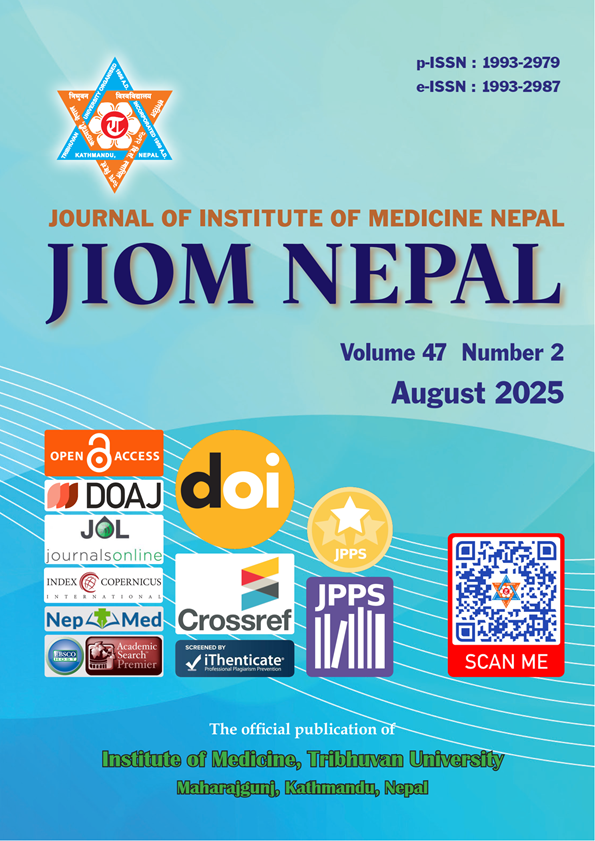Prevalence of Bilateral Vocal Fold Palsy in Cases with Perinatal Hypoxia
DOI:
https://doi.org/10.59779/jiomnepal.1401Keywords:
Hypoxic injury; Perinatal hypoxia; Vocal fold palsyAbstract
Introduction
There is a notable gap concerning the potential impact of perinatal hypoxia on laryngeal innervation and its role as a causative factor for Bilateral Vocal Fold Palsy (BVFP) in children. This study aims to assess the prevalence of BVFP in cases with perinatal hypoxia.
methods
This cross-sectional study took place at the Department of Ear, Nose, and Throat (ENT) and the Department of Pediatrics of Institute of Medicine, Kathmandu, Nepal. Institutional Review Board approval was obtained. From November 2019 to March 2023, all children under 2 years of age with documented perinatal hypoxia were included. Exclusion criteria comprised cases without parental consent, identification of another identifiable cause of BVFP, or the child being on oxygen support during examination, preventing laryngoscopy. Additionally, a retrospective cohort analysis included all BVFP patients at the department between January 2013 and November 2019 to validate our findings.
Results
The study included 21 cases, and none of those with perinatal hypoxia exhibited BVFP. Furthermore, the retrospective cohort of BVFP cases presenting at our department did not reveal a significant history of perinatal hypoxia.
Conclusion
Our study did not yield compelling evidence linking perinatal hypoxia with BVFP however, considering the constraints of our study, insights from existing literature and absence of prior research in this area, the hypothesis of perinatal hypoxia's impact on laryngeal innervation merits further, more comprehensive research in this area.
Published
Issue
Section
Categories
License
Copyright (c) 2025 Journal of Institute of Medicine Nepal

This work is licensed under a Creative Commons Attribution-NonCommercial 4.0 International License.















